Imagine an untapped market with a GDP the size of Spain. That is the extent of the opportunity awaiting the Chinese bounty hunters - within the next three years alone. By 2010 the Chinese economy is forecast to grow by $1,113bn, not far short of the $1,226bn GDP boasted by the world's seventh-biggest economy, Spain. And with a population of 1.4 billion versus Spain's 40 million, this estimated growth figure is just the tip of the iceberg.
Global food and drink manufacturers are lining up for a piece of the action. It is easy to see why they're eyeing the market with so much interest, even if there are plenty of challenges facing the would-be dragon slayers.
The performance of the top 50 companies was "robust, but not outstanding" in 2006, according to the sixth annual OC&C Global Giants Index compiled exclusively for The Grocer. Sales growth was 5.6%, 0.6 percentage points lower than the year before and Return On Capital Employed was down from 21.1% to 20.7%, although profit margins rose 0.5 percentage points to 17%.
"Companies are looking for new markets that offer significantly better opportunities to grow, and China is the number one priority," says Chris Outram, chairman emeritus at OC&C.
"Our analysis shows that the international market has got tougher. Very few companies have consistently grown organically over the past four years and the mature western market is now a very difficult place to operate in, with energy and raw material costs rising.
"China is a golden goose for many companies. The development of the market has happened so quickly that it seems incredible to believe the scale of potential for expansion."
The market has come a long way in a short time. Trade between China and the rest of the world only opened up in 2001 when China became a member of the World Trade Organisation. Since then, the Chinese government has worked hard to become more open to overseas manufacturers.
It now allows overseas players to set up wholly owned foreign subsidiaries, rather than having to establish joint ventures with domestic players.
Several companies already have successful Chinese subsidiaries. PepsiCo, Procter & Gamble and Groupe Danone boast sales of nearly $2bn apiece in China thanks to products such as Pepsi, Head & Shoulders and Evian respectively.
Sales growth in China has been exponential. P&G sales rose 50% last year, outstripping the 4.5% growth for the total business more than ten-fold, with products such as Crest Herbal Crystals and Tide Clean White among their most successful brands. Kimberly-Clark (Huggies, Kleenex) achieved 36% sales growth, Japanese cosmetics manufacturer Shiseido (Aqualabel, Aupres) 30% growth and Unilever (Dove, Lux) 30%.
Global fmcg companies are bullish about the market. Those that are active have the potential to create a new world order in the fmcg fraternity, according to Outram.
"PepsiCo, P&G and Groupe Danone top the turnover league in China, while world leader Nestlé is lagging behind," he says. "In a decade or two these positions in China could be representative of the order throughout the world."
Outram argues that some players are in danger of missing the boat - and questions why others have failed to develop a more significant presence in the market.
"Companies such as Heinz should have established themselves in China by now but have failed to do so," he says. "Colgate-Palmolive has been in China for many years and has been pretty successful in toothpaste, although it is struggling to go beyond that."
P&G was one of the first companies to see the potential of the Chinese market, setting up a joint venture with established company Hutchison Whampoa in 1988 and introducing Head & Shoulders. Greater China has now become P&G's number two market in terms of sales.
China has already become a very competitive market, but P&G's scale has enabled it to reduce costs, says Charles Zhang, P&G external relations, Greater China.
"The vast majority of the products that we sell in China we make here in China. Most of our raw materials are locally purchased," he says.
Of course, it is not all plain sailing. P&G had difficulties with authorities over metal levels in some of its cosmetics last year and had to temporarily remove them from sale.
Though Danone has been one of the most active companies in the market, its investment in China is under threat after a public spat with its Chinese partner, Wahaha, following a row over the use of its Chinese brand name.
Plenty of companies have simply failed to make an impact. But many are reassessing the market, or looking to increase their presence.
Manufacturers now have a better understanding of the hurdles to negotiate, says Professor David Brown, director of the Lancaster Centre for Management in China.
"Ten years ago companies were working in the dark, but now there are established trade organisations and consultancies that can help minimise risks," he says.
"As companies such as Tesco, Carrefour and Wal-Mart increase their presence it will be easier for manufacturers to get their products to market. That still leaves hundreds of cities and towns without 'traditional' supermarkets, though."
"Developing local contacts and taking advantage of improving infrastructure is vital to reaching markets away from the lights of Beijing and Shanghai," says Brown.
Understanding Chinese culture is key, easier said than done given that it can vary enormously depending on geography.
"There is not one homogenous Chinese market," says Jacques Penhirin, head of the consumer practice in OC&C's Greater China office.
"China is the size of Europe, has many different languages, a huge temperature range and massive differences in development levels.
"Some products work everywhere, but you can't rely on the same strategies - or prices - in Beijing as the rural areas.
"You need to understand the Chinese consumer, and tweak products to suit.
"Scotch whisky was considered too strong for Asians, but drinkers were persuaded to mix it with green tea and it has been a success.
"When Procter & Gamble introduced nappies to China it had to educate mothers about their purpose. They had never seen them before and needed to be taught how they worked."
Trying too hard to meet the needs of the local market can have unanticipated consequences for other parts of the business as Tesco discovered when British newspapers reacted with moral outrage to the discovery it was selling live turtles in its Chinese stores.
Western companies that make the most of the opportunities China offers, however, will be able to offset the impact of any weaker markets they are operating in.
"Companies need to find ways of taking a bigger share of the growth in developed markets," says Outram.
"There is evidence of a strategic shift towards top-line growth. They are splashing out on advertising and being more aggressive at driving sales."
Those that continue to focus on more established markets will need to increase their spend on research and development and many are already doing so, says Outram, often by buying in the new product development.
"Instead of spending time coming up with new ideas themselves, companies such as P&G are buying innovation in the form of smaller companies. They have adopted a 'proudly found elsewhere' mentality, which is paying off. It gets products to market rapidly, reduces the failure rates and is likely to be copied by a range of companies."
Elsewhere, acquisitions revealed a greater level of caution, with the vast majority of deals focused on core activities, revealed the OC&C analysis. The top 10 deals were all based around strengthening or increasing existing positions instead of diversification.
"Fmcg companies have been selling off their non-core operations and refocusing on the main business," says Outram. "They have spent years cutting costs and they are now running out of rope, so need to concentrate their efforts much more. With everyone battling it out in China, it is still vital to keep your eye on the ball at home." nthe growing market
international expansion plans
China86%
Eastern Europe/Russia76%
India57%
% mentioning geography as an expansion target
Emerging markets represent a major area of international growth. China is clear favourite.
turnover in china in 2006 ($m)
PepsiCo1,940
Procter & Gamble1,900
Groupe Danone1,897
Nestlé1,400
Unilever645
L'Oréal462
Colgate-Palmolive390
Shiseido364
Avon212
General Mills200
Scottish & Newcastle163
Henkel135
HJ Heinz130
The shape of things to come? Opportunities in China are so great that it could transform the world order of fmcg companies. PepsiCo, P&G and Groupe Danone have a big lead over the competition, and at this rate could overtake Nestlé on the international stage.
growth rates: china vs world '06
Procter & Gamble50%
4.5%
Kimberly-Clark36%
5.4%
Shiseido30%
4.9%
Unilever30%
3.2%
Henkel25%
3.9%
Nestlé 18%
7.8%
n China n World
The Chinese operations of fmcg companies are outstripping performance globally.
Source: Annual reports, OC&C analysiskey strategic directions
organic growth
Product innovation98%
98%
Brand stretching69%
67%
Increase in marketing efforts54%
34%
Greater R&D spend77%
41%
Strategic partnership61%
41%
Channel diversification53%
33%
geographic strategy
Global expansion76%
61%
Focus on main markets29%
31%
Focus on domestic markets16%
8%
Core business strategy
Acquisitions in core business84%
76%
Fewer global brands in core activities33%
47%
Divestitures from non-core operations47%
37%
n 2006 n 2005
Source: Annual reports/10K/OC&C analysisstar performers companies that impressed this year
It may not have been an outstanding year for the top 50 fmcg companies, but there were certainly some good individual performances. There were three new entries, some impressive climbers and profit margins to envy. Here we highlight the companies that stood out.
?Reckitt Benckiser
Highest mover in the index, gaining seven places, due to efficient acquisition of BHI, the launch of new products and better investment in brands such as Vanish and Finish. Sales grew by 17.8% to $9,071m and ROCE hit 31.9%.
?SABMiller
At the top of the growth league, achieving a sales increase of 20%. This is attributed to its lager volumes, which rose 19%. This was supported by strong organic growth due to excellent performance in all geographical segments.
?Groupe Danone
The most consistent performer in terms of growth, achieving an average organic sales increase of 7.8% in the past four years, with 2006 organic growth of 9.7%.
?InBev
Had the fourth-highest growth of 2006, up 14.2% to $16,718m. This was primarily due to its Stella Artois business, which grew 60% in the premium import segment in the US and 17% in Canada.
?Tate & Lyle
A new entry in the index at 40, after achieving sales of $6,689m and growth of 11.3%. Sales were driven mainly by growth in value-added product including Splenda Sucralose. However, it was not all good news. Its operating margin declined from 7% to 2% due to an impairment charge of £272m following the implementation of the new EU sugar regime regulations.
?PepsiCo
One of the few companies to consistently grow organically over recent years, its sales stand at $35,137m. Its average organic growth has been 6.8% over the past four years, with a high of 9% in 2005. Its ROCE of 38.8% is healthy, and margins are above 20%.
?Beiersdorf
The German skin and beauty company enters the list after sound growth in Germany and the rest of the Eurozone, supported by strong growth in China, Latin America and Eastern Europe. Profit margin increased from 12% to 16.6%, the third-highest jump, because pre-tax profit rose from €535m to €853m as a result of sales of BSN Medical and improvement in EBIT in both the consumer and Tesa business segments.
?Procter & Gamble
Its growth slipped below the magic 6% figure in 2003, but since then it has had three years of enviably high and consistent organic sales growth. It is the second-largest global fmcg company, rising one place with sales of $71,005m. P&G is one of the key overseas fmcg players in the Chinese market.
?Mattel
Another new entry is the American toy company, which owns the Fisher-Price and Barbie brands. Increase in international sales coupled with domestic growth (especially girls and boys brands in the US) helped Mattel gain 48th spot. Sales stand at $5,650m, an increase of 9.1%. Profit margin reached 13% and ROCE hit 23.4%.



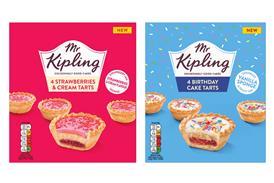






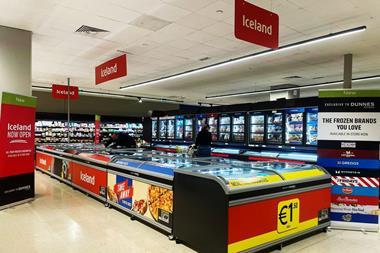
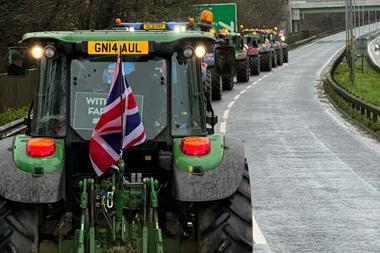

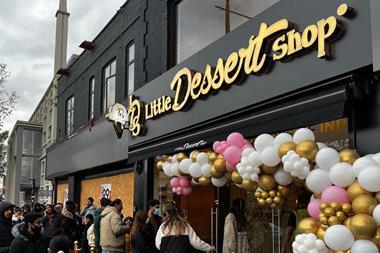
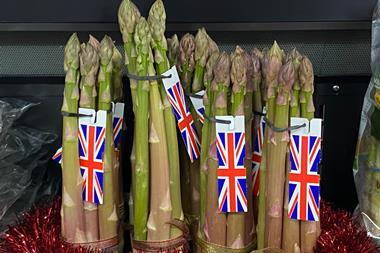
No comments yet